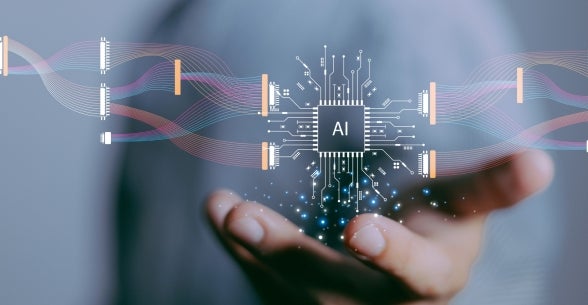
From digital avatars to digital property – digital rights management is increasingly important in the Fourth Industrial Revolution
01/24/23With the influx of new technologies and the amount of content flowing through the ethers, it has become increasingly important to develop and protect the rights of all people, places, and things. Specifically digital rights, which involves the valuation and protection of digital property and content.
The basics of digital rights management
When we talk about digital rights, we must break it down to the basics. In my line of work, I work mainly with people and estates. Their rights can be categorized into tangible and intangible assets. Tangible assets include patents, trademarks, and copyrights, which protect the individual against unauthorized uses of inventions and creative content such as music, books, screenplays, logos, slogans, paintings, and the list goes on. If a person or estate has patents, trademarks, or copyrights, they 1) make money from those assets, and 2) if anyone uses their intellectual property without permission, the owner and their property are protected.
Intangible assets, on the other hand, include the right of publicity which protects the individual against unauthorized and commercial uses of a person’s name, image, and likeness. If a person is living, they can make personal appearances, endorse brands, perform concerts, and more. But what happens when they pass away? Unlike tangible assets, the right of publicity goes away when a person dies. Furthermore, right of publicity laws vary depending on the state a person passes away in. For example, John Lennon passed away in New York, where there are virtually no right of publicity laws. Other states may acknowledge the right of publicity for 60 years.
One of the biggest consequences of losing the right of publicity when someone passes is that they no longer have the opportunity to make personal appearances, perform, promote, or speak for themselves and their actions. Therefore, the estate loses that revenue stream and must depend solely on patents, trademarks, and copyrights. However, that is changing.
Advancing technologies are changing the landscape of entertainment and rights management
Technology is advancing and increasing rapidly and providing opportunities for people living or deceased to use digital avatars or holograms to perform, publicize, and promote things. After Notorious B.I.G, also known as Biggie, was killed in 1997, Meta hosted a virtual reality concert in 2022 featuring Biggie’s hyper-realistic digital avatar. There are similar examples of Whitney Houston, ABBA, and others.
Living people are now experiencing options to do both digital and in-person performances. In 2020, 12 million Fortnite users logged in to watch Travis Scott’s digital concert, from which he made about $20 million. Actors are also being presented with options to use digital avatars. Using these digital humans allows for aging and de-aging, speaking different languages, and much more.
As CTO and Vice President of CMG Worldwide – a leader in the industry for 43 years – we represent the rights of James Dean, and we’ve been working on a groundbreaking project led by Mark Roesler – the creation of the James Dean digital human. He will star in an upcoming movie with plans to use him in other films, games, and virtual reality. There is a lot of debate around this topic. Many people think, like I do, that it’s an amazing opportunity to honor someone’s life and continue their legacy. However, some actors feel that using an avatar will take away from their own opportunities. And yes, it will. But it will also add opportunities for so many other people. There are hundreds of roles involved in creating and using digital humans – photogrammetry scanning, biophysical modeling, voice synthesis, brain computing, and motion capture, to name a few. While creating and using these digital avatars may take away from one actor, it’s creating hundreds of jobs. It’s better to spread wealth across many people than pay one person millions of dollars for one role. These opportunities are already transforming entertainment and will continue to disrupt the industry in the coming years.
And it's not just actors and musicians who are using this technology. Another example that we’re starting to see pop up is the creation of digital avatars for fictional characters, such as Lil Miquela. There is no living, breathing Lil Miquela, but as a digital avatar, she is a model and social media influencer with over 2.9 million followers. She’s done promotions for brands like Prada and Calvin Klein, and at one point she had a valuation of $125 million to $150 million.
Beyond celebrities
Although digital rights management is currently heavily focused on celebrities, new mediums and technologies are creating digital value for all people as well as places and things. Buildings – homes, schools, museums, stadiums – all have a physical value. So do things – shoes, cars, clothes. The digital world has created a new layer of value to these tangible commodities. And social media and the metaverse are creating a new layer of value to and for people like you and me.
For example, imagine walking into a stadium. When you scan your ticket, the stadium now knows that you are there. You can interact with the stadium from your phone, purchase food and merchandise, and even receive custom ads or messaging based on your history. This not only creates a digital value for the stadium, but it also creates a digital value for you, the consumer.
This is not a futuristic idea either. I can guarantee that the Phoenix Suns arena has a value for me. The Footprint Center and other sporting arenas know the value of everyone who steps foot in that stadium. Some of those values are made up of digital components – the person’s digital activity, the technology they’re using, the products they’re purchasing, and the apps they’re using. There's a digital value assigned to each person based on their habits inside that stadium.
Additionally, more and more people are participating in different metaverse ecosystems and social media, creating another layer of digital value for brands and for the people in these ecosystems. Meta and other social media companies collect insane amounts of data daily, and they use that data to make money. Every person with a social media profile has a digital value – and more and more of us are starting to care about our digital value.
Many people are now replacing some of the traditional social interactions and using the metaverse to socialize and create alternate realities. When they’re in these digital worlds, they want to create the coolest, best version of their avatar. Additionally, non-fungible tokens (NFTs) are another avenue that companies use to generate digital revenue. Nike is a great example of this. Nike generated $180 million last year on NFTs alone. People purchase custom, one-of-a-kind digital shoes to wear, use, or even sell in metaverse ecosystems. The same is happening with other retailers, car manufacturers, toy manufacturers, and many others. These kinds of purchases are generating revenue for companies, assigning digital value to each person, and even creating social commerce opportunities.
How are these digital assets assigned value? Right now, it’s the wild west. Everything is so new, and there are no concrete processes or regulations around digital rights valuation. The biggest contributor currently is market perception. I recently hired a social media influencer for a lot of money to endorse one of my client’s products. The reasoning? Because she has almost 50 million Instagram followers.
Preparing for the future of digital and digital rights
As we move into the future, there is going to be even greater digital disruption. As I was driving down the street in Los Angeles the other day, I saw a woman riding her bike, look down at her phone, and almost crash into the back of a car. Humans didn’t evolve to sit with our heads down on a phone or watch. We evolved to be heads-up.
There are already many companies around the world working on new technologies to support heads-up digital engagement, and many more will follow. There are billions of dollars being spent each year, by every major player in the game, investing in new technologies like augmented reality (AR)/virtual reality (VR) glasses, image recognition, and gaze tracking. And while right now, these types of technological advances seem to be futuristic or reserved for the Hollywood A-list, they are not too far from becoming mainstream and replacing our handheld devices.
What I want global leaders, managers, and even consumers to think about is that change is inevitable. And it will happen rapidly with all the consumer hardware devices coming out in the near future. This era of technological transformation is going to shine a light on digital values, and rights management of digital assets. Right now, we're not thinking about these things because it's not part of our daily habits. But when it does become part of our daily habits, it's going to be a very important topic of conversation.




